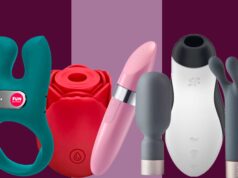
The world as a whole is a fast-moving one. More information, more trends, more sharing, more technology – it’s an endless race to stay ahead for any business these days. As a small business, this race then extends further to not only staying ahead, but making real progress and growth whilst competing with an endless stream of competitors striving for the same thing.
Luckily, for small businesses, there’s an insatiable appetite for information from clients, customers and those who share your industry. That creates a gap for any forward-thinking business to slide into because demonstrating your knowledge and thought leadership is welcomed and wanted by others. People want to give their attention to those who can deliver information, education and resources relevant to them.
How to become a thought leader in your industry using webinars
There are multiple ways to demonstrate your knowledge including video content, blog content, newsletters and sharing of authority information sources. The most efficient and convenient option, by far, is to offer webinars to your audience. Webinars grew massively in popularity during the Covid-19 pandemic, but they have always been an excellent choice for sharing information. They allow anyone with access to the internet to attend your event. The capacity of the live event depends on the software you use, but often attendees can be in their thousands if that’s the size you’re comfortable with. You can also have multiple presenters.
Key benefits of webinars for small businesses:

- Creates content which is accessible to the masses
- Businesses of all shapes and sizes across a whole range of industries can make use of them
- Webinars open up dialogue through Q&A’s
- Customers and clients get to know the individuals behind your organisation
- Webinars cost very little to produce
- Webinars can create hot sales leads
- Your knowledge in the industry is clearly demonstrated in a powerful way
- You can gain an insight into your audience through polls and surveys
Uploading your webinars is key
As well as the many benefits that come with a live webinar, the post-production phase with the recording can’t be ignored. The value of your webinar goes far beyond the live event itself. By uploading a recording of your webinar and sending a link to all attendees and those you think might be interested, you’re instantly boosting the reach of your content.
Even more importantly, you can then ensure the content is accessible to all during this post-production phase. When looking at post-production you should consider adding:
- Multiple language voiceovers/subtitles from a professional voice over agency such as matineeco.uk to really expand your reach and potential audience
- Subtitles and descriptions
- A transcription of the webinar, possibly even in multiple languages
- Add captions that are cleaned up or redone before uploading the recording if they were done during the live event
- Include a presentation slides link in a simplified form where they can be read by text-readers for the visually impaired
- Ensure the slides are high contrast in their colours

When you communicate to your followers/clients/customers there will be an upcoming webinar, or when sending out the recording, do make it very clear that it’s accessible to everyone. Highlight where links can be found to transcriptions and make it clear how a person might view a version with a language voiceover, or with subtitling.
Top tips for webinar presenters
Whilst you can choose a great topic that really resonates with your audience, your webinar will be for nothing if your presenters aren’t able to deliver it in an engaging fashion. Accordingly, make sure your presenters follow these top tips to make your webinar a success:
- Be enthusiastic – it might sound obvious, but showing enthusiasm for the topic in hand is especially important when delivering a webinar. When you’re presenting in person it’s easier to gauge your audience’s level of interest and respond accordingly. When you’re delivering content remotely on a webinar however, your presenters need to work harder to keep everyone engaged – it’s all too easy for your audience to become distracted by email notifications or internet browsing. By being enthusiastic, your presenters can hold your audience’s attention on the webinar
- Encourage engagement – it can be tempting for presenters to stick to a script and just work through their content, particularly if they’re not very confident. However, from your audience’s perspective, engagement and interaction will make for a much more rewarding and enjoyable webinar. As such, you should encourage all presenters to have at least some element of audience participation and engagement in their presentation. This can be as simple as hosting a Q&A session or asking audience members to share their own experiences on the subject at hand. Whatever option they go for, make sure your presenter has a clear format in mind and knows how to execute it within the webinar. There’s nothing worse than a presenter struggling to interact with the audience because there’s no clear format for how questions should be asked or in which order people should speak. Thankfully, online webinar platforms have gotten much more sophisticated over the last 18 months and all the mainstream platforms have a range of solutions to meet your needs
- Be on time – it’s really important that your webinar flows from one section to the next. This will help make the most of the audience engagement and interaction you’ve built up. If the flow’s interrupted – for example because a presenter turns up late or isn’t ready to present on time – you’ll end up with a very start/stop webinar that will undo a lot of your good work. Therefore, make sure each presenter knows when their allotted time slot for presenting begins, and how far in advance you would like them to log on

What will your first webinar be about?
Now that you have a small insight into the benefits of holding a webinar and posting the recording afterwards you are likely keen to get started and offer up your first event. Do take your time practising webinars and doing your research before holding your first one. A bad webinar may put off attendees showing up for the next one. The first one needs to be high-quality and demonstrate your value in your industry. Good luck!









